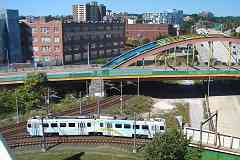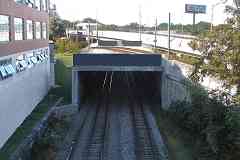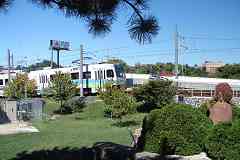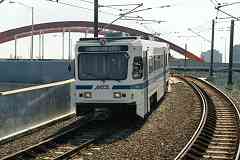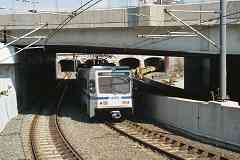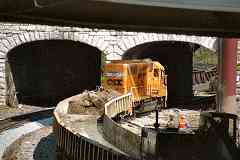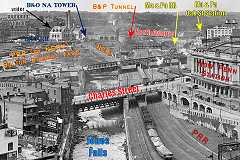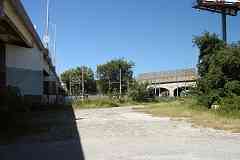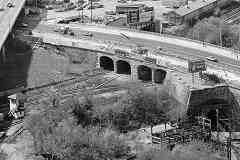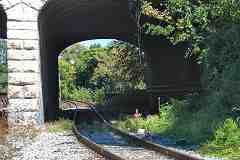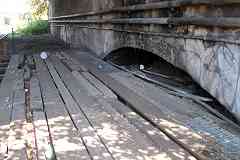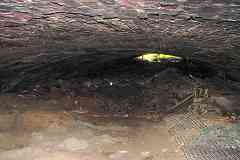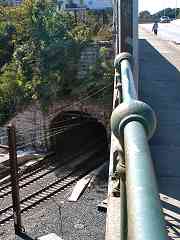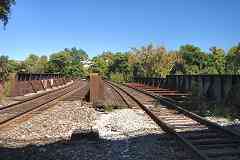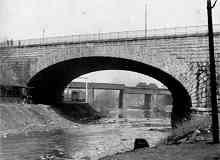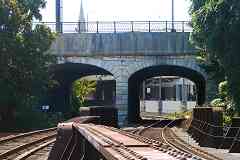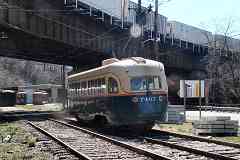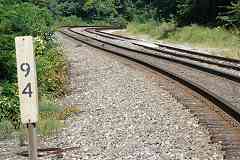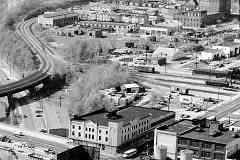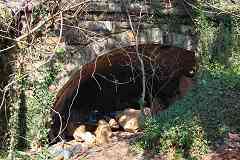|
The JFX has been on the left since about 1960 and NA Tower was still in use
in 1974, while at top a pre-Magnum Tom Selleck hawks cigs.
On the right, the thumb protruding from North Avenue marks the north portal
of the West Baltimore tunnel opened by Baltimore & Potomac (B&P) Railroad
during 1873. B&P Tunnel has three sections -- this one named for nearby
John Street -- all of which were inherited by Pennsylvania Railroad and are
now part of Amtrak's Northeast Corridor. A train rumbles through every 10
minutes on average, most of which are Amtrak and MARC passenger trains, plus
a few Norfolk Southern freights. The old tunnel has become an operational
bottleneck due to limiting height, curves, and grade.
If you look closely at the thumb, you'll see a smaller stone arch is contained
within a larger one. The smaller is the actual B&P tunnel while the larger arch
redirects the weight of North Avenue around it.
Like the other railroads, B&P / Pennsy received two tunnels under
North Avenue. The other is now at photo top, its never-completed eastern portal
buried by JFX construction not far from the Selleck billboard, incomplete so
long it is all but forgotten; you will find no other mention of it online.
Link:
LoC source photo
| 